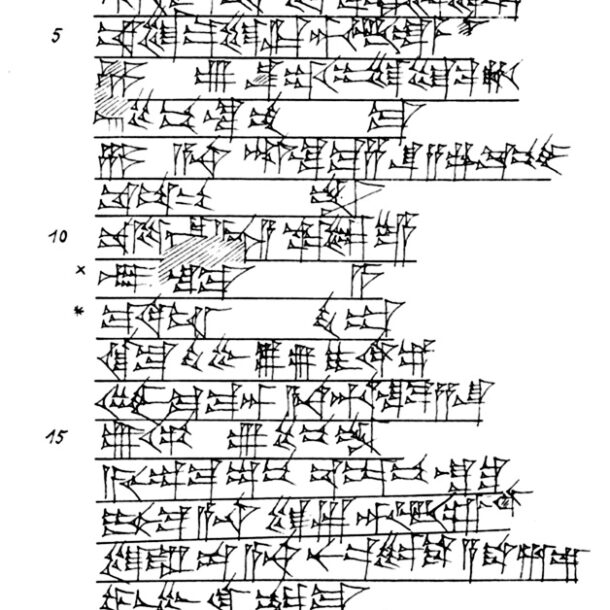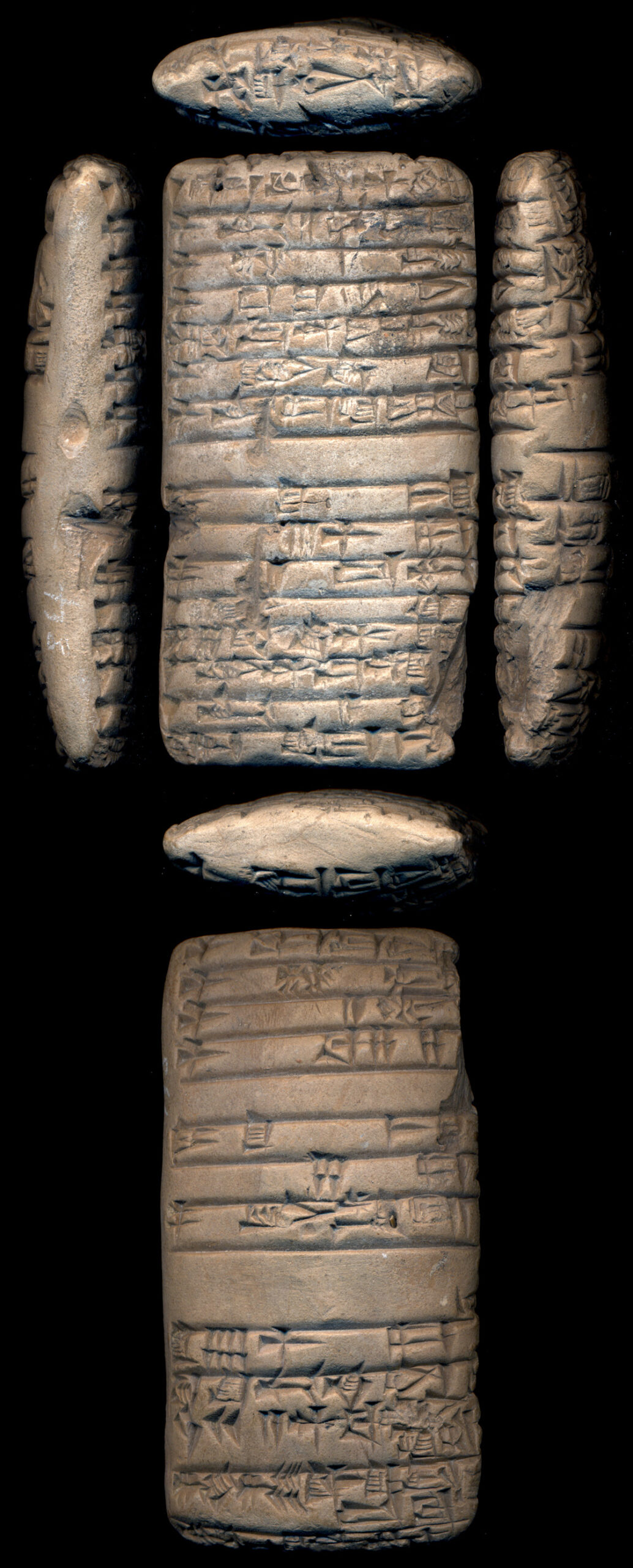When we visit a new country, it can sometimes be hard to know exactly what’s on the menu. Strings of unfamiliar words and symbols, and if you’re lucky, a picture to point at. I seem to have an uncanny knack for finding the one dish that contains tripe, which ironically is about the only thing that I can’t stomach. If the menu were to be written in cuneiform, Benno Lansberger, who you saw on day 64, would be an invaluable dining companion. As I said then, he was the foremost expert on Mesopotamian fauna and flora, and what are fauna and flora but potential menu items?
As every schoolboy knows the ancient Romans were a bunch of dormouse guzzlers, but it wasn’t just them who were at it. In his 1995 article, “There’s a Rat in my Soup”, Robert K. Englund discusses the difficulties inherent in identifying Mesopotamian fauna and flora from their Sumerian and Akkadian names. One creature, the ushummu, was thought by Landsberger to be a dormouse, but Englund notes a number of ways in which the description of the “reed rodent” doesn’t fit with this identification. Probably best to invite him along to your gastro-tour along the Euphrates to double-check Benno’s advice. Englund seems to have considered Landsberger to have been a little bit slapdash in his approach, at times sacrificing quantity for quality. Shade was thrown: “Landsberger moved through an immense amount of material in his academic career, so that his attention to philological detail… was not that found in the work of some less productive scholars.”
Alongside the staples of beer and bread, Mesopotamian food culture had catholic tastes, and were open to trying new things. Today’s image is of a letter, transcribed and published in 1933 by Georges Dossin. In part it reads:
“Tutu-magir sent me 7 ushummu from the city Tur-Ugalla and I sent 6 on to Shamash-Lamassashu, the official. I kept just one to eat it myself, and it tasted excellent! Had I known how good they were, I’d not have sent a single one to Shamash-Lamassashu.”
The writer goes on to order fifteen more ushummu from his correspondent the next time they go down to Tur-Ugalla. I think we need to find out just what this delicacy might be, and hope they’ve not been hunted to extinction like other snacks. Luckily for us, Englund agreed. Through an exhaustive search of references to this creature from Old Sumerian right through to Neo-Babylonian sources, he cements its place as a delicacy in the feasts of gods and kings, estimates its size based on the quantity of fodder required when kept caged (about the size of a guinea pig or a large rat), and rules out the possibility that it was a dormouse on the grounds of both habitat and size. So not a dormouse, but most likely a bandicoot rat, otherwise known as a mole rat. I’ve checked and their conservation status according to Encyclopedia of Life is “Least Concern: population increasing”, and it seems they’re no longer a major food source anywhere. Maybe it’s time to switch up the menu.
Englund would have a been a great dining companion, but sadly he died earlier this year at the age of 68. He leaves behind a strong body of work, including a detailed article on the organisation of work and slavery in ancient Mesopotamia and later times, “The Smell of the Cage”. Perhaps his biggest contribution to cuneiform studies was as founder and director of the CDLI, source of so many of the images I’ve been profoundly influenced by over the past couple of months. Wherever you are, Bob, I hope there’s a bandicoot rat on the table for you.

